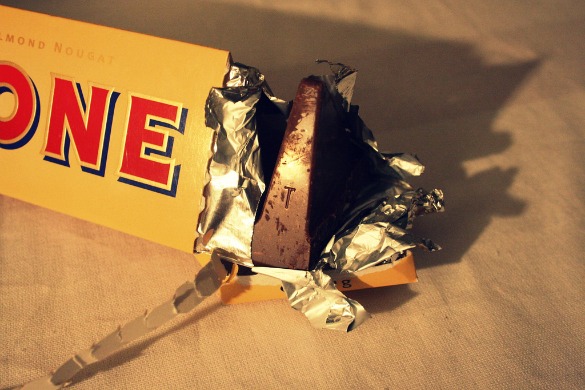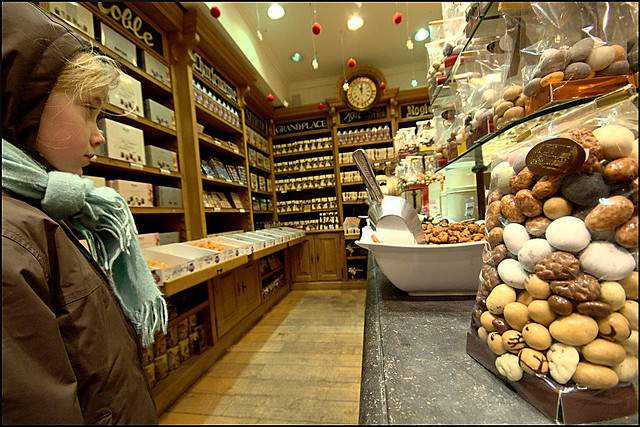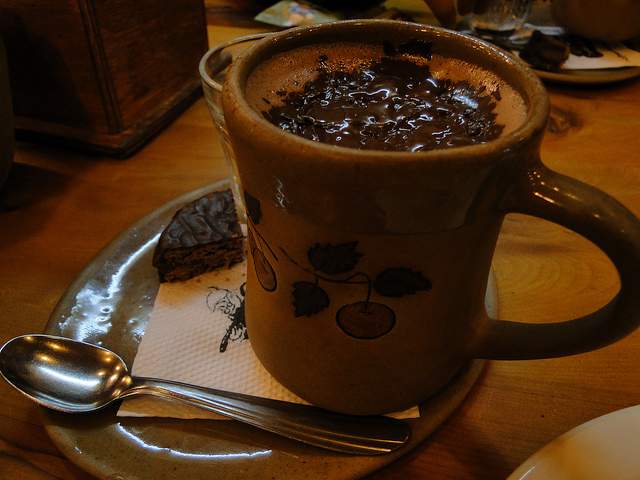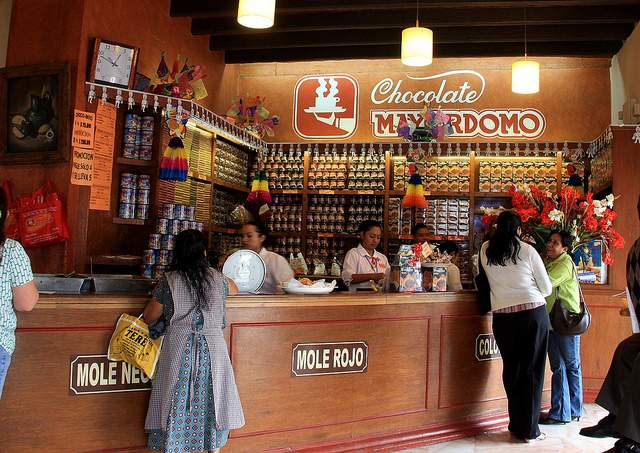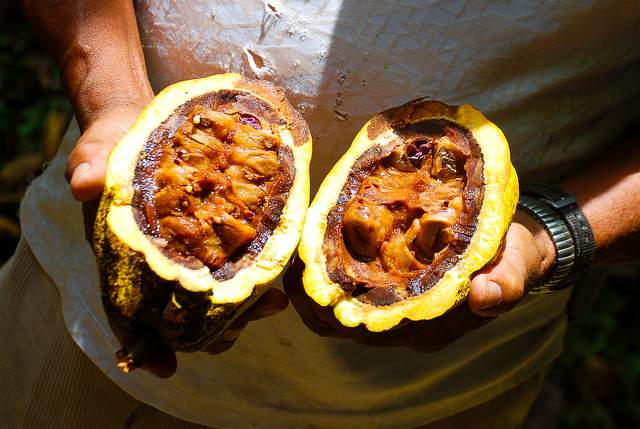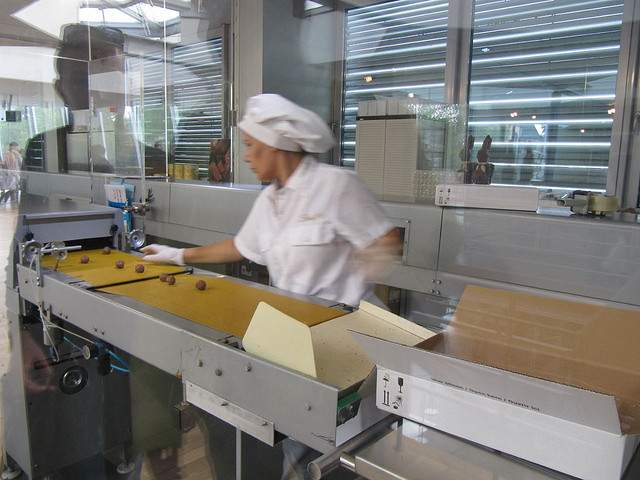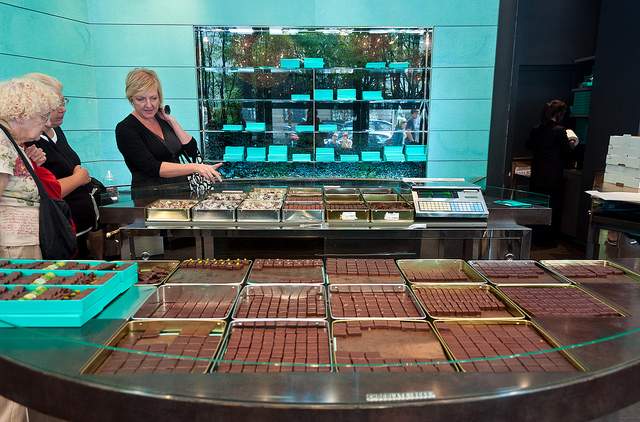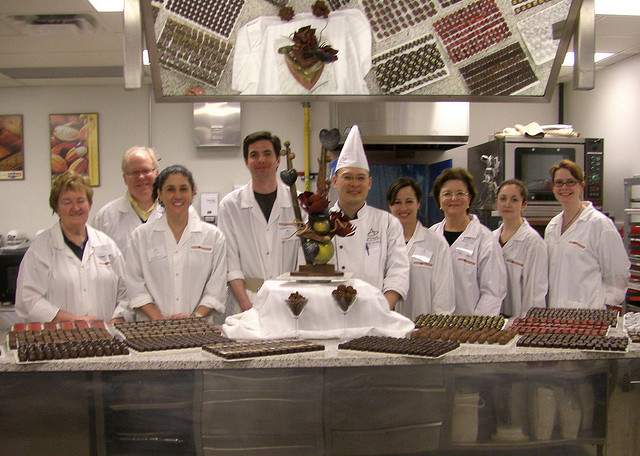Some travelers cross the world to learn about history. Others savor every chance to try regional foods and local cuisines. Now, there’s an even more specific gastronomic trend: Chocolate Travel.
A phenomenon fired by our desire to keep trying this aphrodisiac in all its different forms, Chocolate Travel can be anything from an informal dégustation to taking an official chocolate cruise. Read on to find out how you, too, can plan a trip dedicated entirely to your love of chocolate.
The best chocolate destinations worldwide
Chocolate is sold all over the globe. But there’s a clear separation between the crème de la crème and just another regular bar. Here are seven destinations where you can find top-quality chocolate:
1. Switzerland
Chocolate processing started in Switzerland in the 17th century, and the products started spreading overseas after 1850. Brands such as Caillier (now Nestlé) and Suchard (now Kraft Foods, including the famous Toblerone) were what got it the Swiss chocolate snowball running. Today, the best brands include Lindt and Sprüngli.
You can get great chocolate all over the country, but each region has a specialty. For example, in the Jura Mountains, the chocolatiers (meaning the people who make chocolate) craft little chocolate watches. Bern, on the other hand, is famous for its chocolate bears. Chocolate is sold all year round, but reaches a peak consumption in spring (chocolate in the form of flowers), Easter (chocolate bunnies) and autumn (chocolate in the form of chestnuts and mushrooms). Winter, of course, is marked by a whole series of Christmas treats with a smooth, creamy texture.
>> Read about other culinary experiences not to miss in Switzerland or start planning your trip to Switzerland with hostels in Zurich, and airfare to Switzerland,
2. Belgium
Belgian chocolate-making traditions date back to the 19th century, when Belgium’s colonies in Africa granted the country access to various cocoa plants. Under the rule of Kind Leopold II, these plants began providing the raw materials for Belgian chocolate. The most famous Belgian invention is definitely the praline, which emerged in the early 20th century. Neuhaus still prides itself as being “the inventor of the Belgian praline.”
In the early days, pralines were whole almonds coated individually in caramelized sugar. Pralin refers to the powder made by grinding such sugarcoated nuts, and when this powder is added to chocolate it becomes praliné. Nowadays, however, in Belgium praline has come to mean filled chocolates in general. Belgian brands such as Godiva and Leonidas are widely available throughout the world, but if you’re looking for something more local, try Pierre Marcolini.
>> Find airfare to Brussels and book a Brussels hostel
3. Bariloche, Argentina
Patagonia is known for being ecologically friendly, a trend that is also reflected in the numerous artisanal and organic food establishments. The Argentine town of Bariloche has become a hub not only for artisanal ice cream, but also for chocolate. The trend for manufacturing artisanal foods and desserts started in the 1960s, when the inhabitants started realizing that Patagonia, and the particular valley that includes Bariloche and El Bolsón, offers an infinite variety of food, which weren’t yet reflected in the area’s gastronomy. It was thus that inhabitants, such as the owner’s of the ice cream shop Jauja, began making their own goods using milk, eggs, fruits and other goods from the local area.
The same milk and eggs go into the manufacturing process of Bariloche’s chocolate. Mamuschka is the most popular destination for tourists to stock up, but Rapa Nui offers comparable truffles, bars and other chocolate treats at a lower price. You can also combine an artisanal hot chocolate with an Argentinean alfajor, a dry pastry dessert involving two biscuits glued together either with more chocolate or dulce de leche, a caramelized form of milk.
>> Book a flight to Bariloche or read about why you should visit Argentina
4. Oaxaca, Mexico
Chocolate is embedded in the gastronomic tradition of Oaxaca. You can have it bitter, with vanilla or cinnamon, in the form of a bar, or dissolved in milk or water. The latter would be the most traditional: dissolved in a little water and accompanied by a pan de yema, literally meaning egg-yolk bread. Chocolate Mayordomo is a good brand to look out for; it is 100% authentic from Oaxaca.
In some establishments, there still exists the tradition to bring your own cocoa, cinnamon, sugar and other ingredients; the staff will grind and mix them according to your taste. This tradition dates back to the era of Moctezuma, who liked to drink hot chocolate with water. It was also Moctezuma who first introduced this drink to Hernán Cortés, who then took Carlos V to try it, too. For this reason, there are chocolate bars with the brand Moctezuma and Carlos V in Mexico.
>> Read about things to do in Oaxaca or find out more about authentic Mexican food
5. Costa Rica
Harvested from the cocoa tree, the chocolate bean has a long tradition in Costa Rica. During pre-Columbian times, the beans were used by indigenous tribes, for whom they were one of the main crops until the advent of coffee and tobacco in the late 16th century. Most of the country’s cocoa comes from the Caribbean lowlands, which provide ideal climatic conditions with a lot of rain. Cocoa is a crop that grows in the shade, and thus has prevented deforestation and conserved a lot of Costa Rica’s wild life, which finds shelter in the rejuvenating cocoa plantations.
Numerous plantations offer tours of their ground so you can see the chocolate-making process first-hand. For a good selection, check out Chocolate Tourism, and CostaRica.com.
>> Find a flight to San Jose or book a Costa Rica adventure tour
6. South Africa
South African chocolate is based on Swiss traditions, and Lindt, the Swiss chocolate company, now has an official Chocolate Studio in both Cape Town and Johannesburg. Nestlé and Cadbury, too, have factories in Cape Town, making the East of the country account for more than half of South Africa’s chocolate production. In fact, the country’s chocolate market is valued at more than 450 million dollars, and growing at a about 3% per year.
As such, the country stands at the forefront of offering not only conventional milk chocolates, but is also dedicated to developing sugar-free and lactose-free alternatives. These can be found, for example, at ChocoTree, a company based in Johannesburg. For further treats, check out ChocoLocate, which provides a useful list of where to find the best South African chocolate on-site and online.
>> Book flights to South Africa or find a hostel in South Africa
Chocolate museums and factories
Another way to plan a chocolate trip is to head directly for the museums and factories. Europe and the United States offer the following options:
7. The Imhoff-Stollwerck Chocolate Museum, Cologne, Germany
At this institution, you will witness a glass chocolate factory, a “tropical house” where you can see the cocoa tree in-situ, as well as information on cult chocolates and their history. Another highlight are the series of historical advertisements that trace the commercial evolution of chocolate over time.
8. The Choco-Story Museum, Bruges, Belgium
If you want to learn about the history of chocolate, this is the place to go. The Choco-Story Museum details the transformation of cocoa into chocolate, showcasing not only historical, geographical and botanical information but also a series of recipes for those who want to try at home.
9. Schoko Land Museum, Caslano-Lugano, Switzerland
One of the largest chocolate-manufacturing companies in Switzerland, the Alprose Factory creates over 8000 tons each year. The museum presents the history of the chocolate-making process from its invention to the modern-day.
10. Museo del Chocolate, Astorga, Spain
A museum housed in a building that looks like a chocolate house, the Museo del Chocolate showcases all the steps of the chocolate-making process. Katy Stewart’s article on The Travel Belles provides a personal account of what you can expect to see (and taste).
11. Guido Gobino Chocolate Factory, Turin, Italy
The specialties here include the typical Turinese giandujotto chocolates, gianduja spreadable cream and chocolate with tonda gentile delle Langhe hazelnuts. Call in advance and you can watch the process, including the traditional machines with stone grinders for the nuts.
12. Lake Champlain Chocolate Factory, Vermont, United States
Within the United States, Vermont is known for being big on natural foods. Lake Champlain Chocolates offers truffles, bars, caramels and more. You can read more about the factory tour here.
13. The Rocky Mountain Chocolate Factory
Though this place calls itself a factory, it is really a series of franchises. Nevertheless, it might be worth checking out its entertaining fudge-making demonstration, old-fashion caramal apples or larger-than-life hand made chocolate. You can search for locations within the United States here. If you’re really eager, you could even inquire about setting up your own franchise.
Chocolate tours and cruises
If you prefer having all the planning done by a professional, consider an organized tour or even a cruise.
14. Chocolate Lover’s Paradise Tours
In Belgium, Chocolate Lover’s Paradise Tours offers a 7-day escorted trip for groups, associations or as an incentive for companies. The standard itinerary stops in Brussels, Bruges and Antwerp, but can be customized according to your wishes. Chocolate and pastry cooking classes can also be added upon request.
15. Chicago Chocolate Tours
If you’re not traveling in such a large group, don’t despair. Chicago Chocolate Tours offers guided walking tours that you can sign up for almost any day of the week. The company now operates in Chicago, Boston and Philadelphia, and moreover has added a cupcake tour option.
16. Chocolate cruises
Last but not least, another option would be to sign up for a cruise. In addition to its U.S. events, Chicago Chocolate Tours charters a Mediterranean Cocoa Cruise each year. For 2011, the boat has already departed, but keep your eyes out for next year’s cruise here. The Regent Sevens Seas also offers a “Spotlight on Chocolate Cruise,” where chocolate experts mingle with guests. Similarly, you can look into the Chocolate Bar onboard the Costa Cruises. Here, you’ll be able to choose from twelve hot or cold chocolate drinks, three different cakes, four kinds of pralines and/or candies, ten types of coffees and nine fresh fruits to dip into the hot chocolate fountain.
17. Want to try your hand?
For those travelers who want to do more than just dip fruit into flowing hot chocolate, there’s the possibility to learn more. Taste of Chocolate in Boston has an entire Chocolate School where you can learn how to make truffles. The same goes for pralines in Munich, where Elly Seidl offers praline-making courses throughout the year. Be aware though, these courses fill up fast, so signing up in advance is recommended. You can view the upcoming dates here. Be aware, however, that these workshops are held in German.
>> Read more about taking a cooking class on your travels
More on Chocolate Travel
If the above recommendations have gotten your mouth watering, consider the following sites and blogs for more chocolate travel inspirations:
- Chocolate-Travel.com – Author Kay Harwell Fernández has dedicated quite some time to compiling the best chocolate destinations, and most recently, has published an iPad/iPhone app, Chocoholic Traveler, to keep you updated on all things chocolate.
- TravelBelles.com editor-in-Chief Margo Millure started the “Girls Gotta Eat” category, and along came the articles about chocolate travel.
- Further chocoholic blogs include: The Chocolate Life, The Art of Tasting Chocolate, and Culinary Muse.
Bon appétit!
